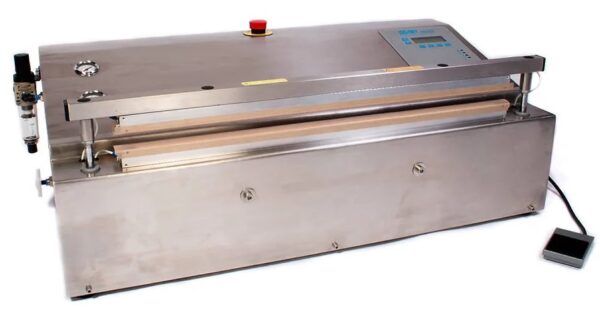Sterile packaging is a cornerstone of modern healthcare, as it directly impacts patient safety and clinical outcomes. If surgical instruments or medical devices become contaminated, the consequences can be severe. This may lead to hospital-acquired infections, surgical complications, extended hospital stays, and increased treatment costs. For this reason, hospitals and device manufacturers invest heavily in sterilization and packaging processes. A technology that has gained importance in this effort is the medical vacuum sealer. By removing air and creating airtight seals, it helps maintain sterility and extends the shelf life of critical supplies. Understanding how this tool works highlights its value in safe and efficient healthcare delivery.
What Is a Medical Vacuum Sealer?
A medical vacuum sealer is a specialized device designed to remove air from packaging before sealing it completely. This step creates an environment that prevents bacteria, dust, and moisture from compromising the integrity of the package. The technology is not limited to one design. Chamber sealers, nozzle sealers, and band sealers are among the types used in hospitals and manufacturing units. Each model is chosen depending on the type of product and the volume of items that need secure packaging.
How Vacuum Sealing Improves Sterility
Removing air is more than just eliminating oxygen; it also involves removing other gases. It reduces the possibility of microbial growth inside the package. Once sealed, the barrier prevents contaminants from entering during storage or transport. Consistency is another advantage. By controlling temperature, pressure, and sealing time, these machines ensure each package receives the same level of protection. This uniformity reduces errors and helps facilities maintain reliable sterility across thousands of items.
Advantages Over Conventional Packaging
Traditional heat sealers can close a package but do not always remove residual air. This trapped air can allow microbial growth or cause the package to fail under stress. A medical vacuum sealer, on the other hand, removes most oxygen before sealing, which lowers contamination risks and ensures greater protection. Another benefit is stronger seal integrity. The tight barrier reduces the likelihood of leaks, tears, or seal separation. Facilities also appreciate the extended storage periods vacuum-sealed packages offer, as supplies can be prepared well in advance without losing sterility.
Meeting Standards and Ensuring Quality
Healthcare packaging must comply with strict regulations, such as ISO 11607. Advanced sealers support this by offering validation features, such as real-time monitoring of temperature, pressure, and seal duration. Some models include alarms that alert staff to irregularities, while others log performance data for audits. This level of control ensures facilities remain compliant while protecting patient safety.
Applications in Healthcare
Vacuum sealing is widely applied in hospitals, clinics, and medical device manufacturing. It is used for surgical kits, orthopedic implants, diagnostic tools, and disposable supplies like syringes. These items often travel long distances or sit in storage for extended periods. A medical vacuum sealer keeps them sterile, reliable, and ready for immediate use when patients need them most.
Best Practices for Implementation
To achieve consistent results, facilities should train staff in proper machine operation, schedule regular maintenance, and validate sealer performance through routine checks. Monitoring key parameters before approving packages for use adds another safeguard that strengthens patient safety.
Conclusion
Sterile packaging is crucial in protecting patients from infection and ensuring that healthcare systems operate efficiently. The medical vacuum sealer has become a crucial tool in this process, providing stronger seals, reduced contamination risks, and a longer shelf life compared to older methods. With advanced features for validation and monitoring, it enables hospitals and manufacturers to meet international standards while enhancing efficiency. For organizations committed to quality care, investing in this technology means fewer risks, improved compliance, and greater confidence in every package delivered. In healthcare, where safety cannot be compromised, reliable packaging is not only beneficial, but essential. It is vital.
